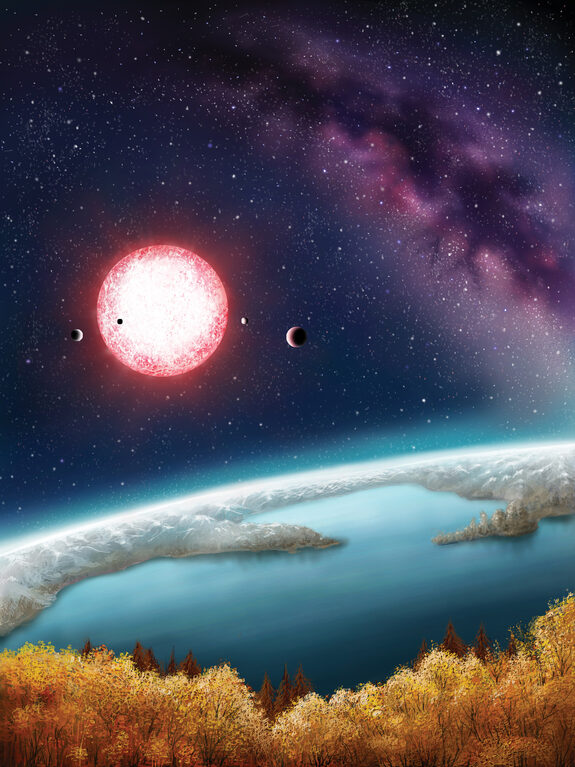Exoplanet Watch: Kepler 186F – Earth 2.0?
Also check: Exoplanet Watch – The Diamond Planet
Exoplanet discoveries are not rare. We have, in recent years, located thousands of exoplanets with many thousands of potential candidates also located and awaiting confirmation. Locating a planet in the habitable zone of its star, however, is pretty special.
Kepler-186f was the first planet discovered that has all the correct ingredients of life. It lies in just the right region where life could exist because water could exist in liquid form. Its star, Kepler-186, is about half the size of our sun, so it would be dimmer but the planet is closer to the sun and the right conditions exist for it to have liquid water, depending on its atmosphere.
What might the surface look like?
At the moment we can only imagine and make guesses as to what the surface might look like. Scientists think that the surface would receive slightly less heat from its star than we do from ours, making the environment cooler but the star would appear larger than our own Sun does in the sky.
 Artist Impression – Danielle Futselaar
Artist Impression – Danielle Futselaar
Scientists are evidently extremely excited to find a planet that could harbor life, given its close proximity to its star. They have, however, warned us about getting too excited; the planet lies in a system almost 500 light years away and would take a relative eternity to reach.
Kepler-186f has been measured to be about 11 percent bigger than earth, although the gravity of the planet would depend largely on its composition. If it had a similar makeup to Earth, it would, in theory, have a similar gravitational pull. A year on the planet would take just 130 days, and you wouldn’t experience much seasonal change due to the circular orbit. The system Kepler-186f is located in also has other planets, 4 of which are closer to the sun than itself and would almost certainly be tidally locked meaning that one side of the planet would constantly be day. Kepler-186f looks to be just far enough from the sun that it might avoid being tidally locked.
“The discovery of Kepler-186f is a significant step toward finding worlds like our planet Earth. Future NASA missions, like the Transiting Exoplanet Survey Satellite and the James Webb Space Telescope, will discover the nearest rocky exoplanets and determine their composition and atmospheric conditions, continuing humankind’s quest to find truly Earth-like worlds.”
Paul Hertz – NASA’s Astrophysics Division Director.
“We know of just one planet where life exists — Earth. When we search for life outside our solar system we focus on finding planets with characteristics that mimic that of Earth. Finding a habitable zone planet comparable to Earth in size is a major step forward. M dwarfs are the most numerous stars. The first signs of other life in the galaxy may well come from planets orbiting an M dwarf.”
Elisa Quintana, research scientist at the SETI Institute at NASA’s Ames Research Center in Moffett Field.
“Being in the habitable zone does not mean we know this planet is habitable. The temperature on the planet is strongly dependent on what kind of atmosphere the planet has. Kepler-186f can be thought of as an Earth-cousin rather than an Earth-twin. It has many properties that resemble Earth.”
Thomas Barclay, research scientist at the Bay Area Environmental Research Institute at Ames.





